Haoxi Zhan
Fine-grained Graph Learning for Multi-view Subspace Clustering
Jan 13, 2022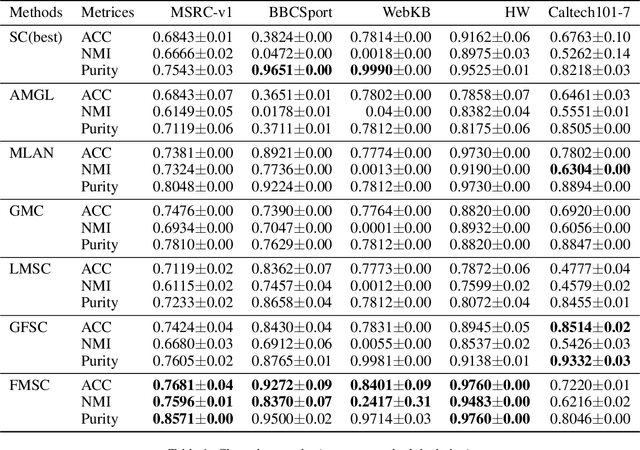
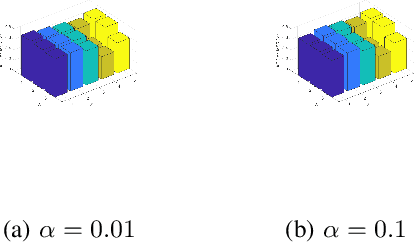
Abstract:Multi-view subspace clustering has conventionally focused on integrating heterogeneous feature descriptions to capture higher-dimensional information. One popular strategy is to generate a common subspace from different views and then apply graph-based approaches to deal with clustering. However, the performance of these methods is still subject to two limitations, namely the multiple views fusion pattern and the connection between the fusion process and clustering tasks. To address these problems, we propose a novel multi-view subspace clustering framework via fine-grained graph learning, which can tell the consistency of local structures between different views and integrate all views more delicately than previous weight regularizations. Different from other models in the literature, the point-level graph regularization and the reformulation of spectral clustering are introduced to perform graphs fusion and learn the shared cluster structure together. Extensive experiments on five real-world datasets show that the proposed framework has comparable performance to the SOTA algorithms.
Black-box Gradient Attack on Graph Neural Networks: Deeper Insights in Graph-based Attack and Defense
Apr 30, 2021

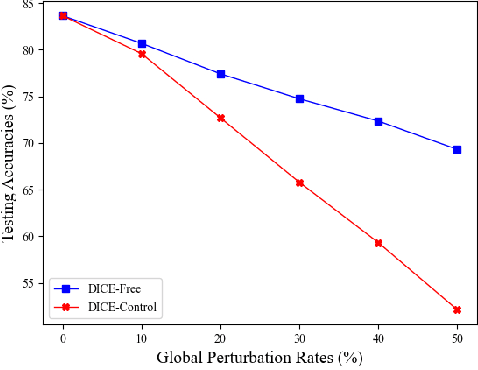
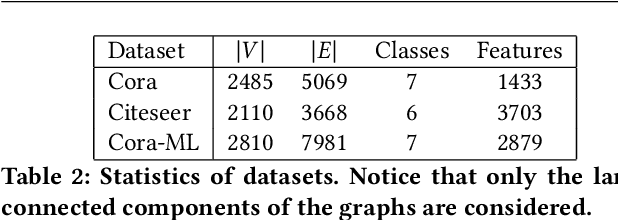
Abstract:Graph Neural Networks (GNNs) have received significant attention due to their state-of-the-art performance on various graph representation learning tasks. However, recent studies reveal that GNNs are vulnerable to adversarial attacks, i.e. an attacker is able to fool the GNNs by perturbing the graph structure or node features deliberately. While being able to successfully decrease the performance of GNNs, most existing attacking algorithms require access to either the model parameters or the training data, which is not practical in the real world. In this paper, we develop deeper insights into the Mettack algorithm, which is a representative grey-box attacking method, and then we propose a gradient-based black-box attacking algorithm. Firstly, we show that the Mettack algorithm will perturb the edges unevenly, thus the attack will be highly dependent on a specific training set. As a result, a simple yet useful strategy to defense against Mettack is to train the GNN with the validation set. Secondly, to overcome the drawbacks, we propose the Black-Box Gradient Attack (BBGA) algorithm. Extensive experiments demonstrate that out proposed method is able to achieve stable attack performance without accessing the training sets of the GNNs. Further results shows that our proposed method is also applicable when attacking against various defense methods.
I-GCN: Robust Graph Convolutional Network via Influence Mechanism
Dec 11, 2020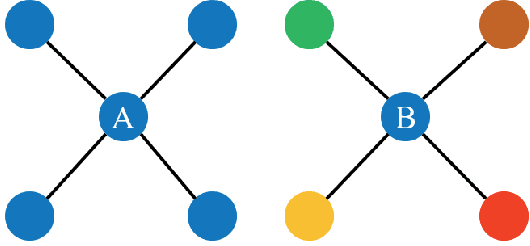


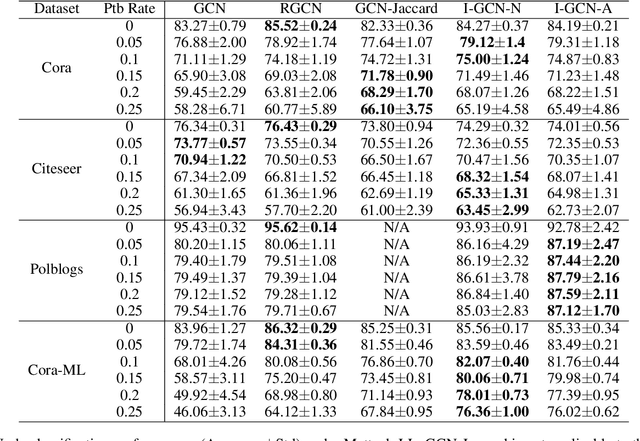
Abstract:Deep learning models for graphs, especially Graph Convolutional Networks (GCNs), have achieved remarkable performance in the task of semi-supervised node classification. However, recent studies show that GCNs suffer from adversarial perturbations. Such vulnerability to adversarial attacks significantly decreases the stability of GCNs when being applied to security-critical applications. Defense methods such as preprocessing, attention mechanism and adversarial training have been discussed by various studies. While being able to achieve desirable performance when the perturbation rates are low, such methods are still vulnerable to high perturbation rates. Meanwhile, some defending algorithms perform poorly when the node features are not visible. Therefore, in this paper, we propose a novel mechanism called influence mechanism, which is able to enhance the robustness of the GCNs significantly. The influence mechanism divides the effect of each node into two parts: introverted influence which tries to maintain its own features and extroverted influence which exerts influences on other nodes. Utilizing the influence mechanism, we propose the Influence GCN (I-GCN) model. Extensive experiments show that our proposed model is able to achieve higher accuracy rates than state-of-the-art methods when defending against non-targeted attacks.
 Add to Chrome
Add to Chrome Add to Firefox
Add to Firefox Add to Edge
Add to Edge